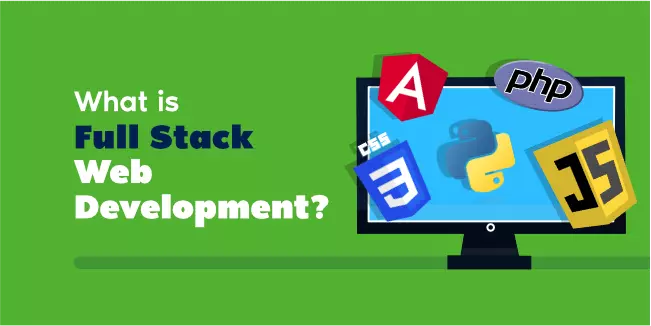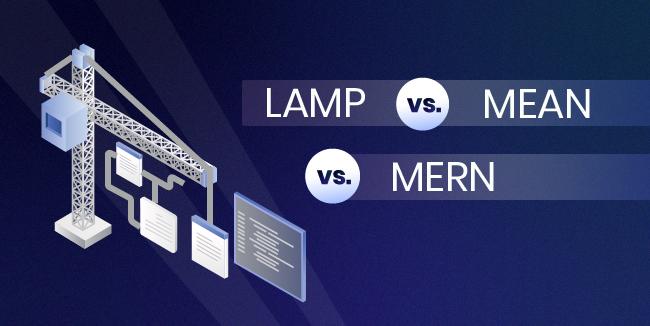webdevelopment
fullstackwebdevelopment
fullstackdevelopment
techstack
What is full stack web development?

With nearly 2 billion active websites worldwide, it's no wonder that every business is trying to get a piece of the pie and establish an online presence. Still, it is worth preparing for website development also in technical terms. Choosing the right tech stack will affect the software development cost and the project's duration. Therefore, do not leave such a key issue to chance. Ask for advice from a trusted software development company with many successful projects in its portfolio.
Full stack development is the act of developing a website from start to finish. It refers to constructing both the front-end (client-side) and back-end (server-side) components of a web application. Full stack web developers who work on all aspects of web applications and sites are known as full stack web developers.
There are different types of full stack developers. Some focus on the back-end, developing the code that makes the website function. Others specialize in the front-end, creating the look and feel of the site. Still, others work on both aspects, making them true all-rounders. Regardless of their specialty, all full stack web developers need to understand how the website pieces fit together.
The benefits of becoming a full stack developer are many. First and foremost, it gives you a better understanding of how websites work. This knowledge is invaluable whether you're working as a developer or simply using websites as a consumer.
Full Stack web vs. Front-End vs. Back-End

What is a T-shaped developer?
The T-shaped model is a concept that has been around for a while that characterizes an individual's talents or abilities. An excellent T-shaped individual will have a wide range of basic skills, concentrating in one or two distinct industries.
A full stack web developer is a good illustration of this approach, as he or she has a broad understanding and deep expertise in a few technologies and platforms. The two most important categories for a complete-stack developer's skillset are front-end development and back-end development.
Front-end Development (Client-side)
The look and feel of a website are in charge of front-end developers. A front-end developer is responsible for every element of a web page, from the logo to the search bar, buttons, overall layout, and how the user interacts with it. Front-end developers must ensure that the website looks good on all devices (phones, tablets, and computers). Responsive Web Design is a term used to describe this.
A front-end developer will be a JavaScript specialist who is very experienced with HTML and CSS and the scripting language. The developer can alter data on a website to make it appealing and useful with these languages.
The primary objective of a front-end developer is to provide a platform for users to interact with, which receives and transmits information. It implies that certain developers will be familiar with web design and may utilize programs like Photoshop and Illustrator to generate images and themed layouts.
A front-end developer is a person who is skilled in creating interfaces and user experiences for websites. User experience and interface design are two additional skills that a team might utilize to determine the most acceptable ways to present and collect data. A front-end developer with these design abilities may be more valuable since he or she can identify the visual appearance of a site while evaluating the technological capabilities of such a design at the same time.
More and more businesses are coming to appreciate the importance of hiring UX/UI designers who specialize in this area of website development. A developer may or may not have this extra set of skills. They are, however, not a requirement for the position.
Back-end Development (Server-side)
The back-end of anything is the portion of the application that the user does not see. For example, a form's content and layout would be created on the client-side, but when users submit their data, it is sent to the server (back-end) for processing. Back-end developers concentrate on the site's logic, building servers, and working with databases and APIs (Application Programming Interfaces).
Back-end developers must be able to write code to receive input from the user and store it in a database. SQL is the language used for database administration, which allows the developer to interact with the database. There are two kinds of databases: relational (like PostgreSQL and MySQL) and non-relational management systems (like Mongo).
Server management is another component of back-end development, which entails using applications that host the database and deliver the website. Using cloud-based platforms that offer infrastructures, such as Heroku or Amazon Web Services, is an alternative to understanding how to operate servers.
A developer can use the skills acquired from study to troubleshoot sluggish apps and even assess how scalable their websites are to handle more visitors.
What is a full stack web developer?
The term "full stack developers" refers to someone strong in the front-end and back-end. They are skilled in both front-end and back-end languages and platforms and server, network, and hosting technologies. They're also likely to be well-versed in both business logic and user experience, implying that they can not only get their hands dirty but can also advise and consult on strategy as well. Most full stack developers would have spent many years in various responsibilities to have this much expertise.
Frameworks
Instead of writing complex proprietary code for every website, frameworks have emerged as popular tools for streamlining and simplifying various procedures. For front-end developers using Javascript, libraries like jQuery are quite popular since they allow you to implement numerous features that other developers have already developed and tested.
JavaScript platforms like AngularJS and EmberJS provide conventions that can be readily integrated into any website to solve many of the problems faced by front-end developers. There are several back-end technologies to pick from, including Ruby on Rails (for the programming language of Ruby), Django and Flask for Python, and node.js for PHP.
The basic goal of frameworks is to simplify a developer's job by establishing norms that may be applied to many of the different stages involved in producing a website - including how information is presented and stored in the database.
What are the most popular technology packages for a Full Stack Development Project?

A software development project's technology stack describes the various technologies needed to create an application. A fast approach to explaining how an app is created by employing tech stacks is to employ them.
LAMP Stack
The LAMP stack stands for Linux, Apache, MySQL, and PHP/Perl/Python. These technologies are in order from left to right: the operating system, web server, database management system, and programming language for the application.
MEAN Stack
MEAN is an acronym for MongoDB, Express.js, AngularJS, and Node.js. A database named MongoDB is at the heart of this stack; Express.js, a web application framework, supports it; and AngularJS and Node.js are two web development platforms that enable you to write JavaScript into HTML code.
The majority of the stack is built on JavaScript framework code. As the primary programming language in the stack, JavaScript makes development more convenient for JavaScript professionals. It is a significant benefit for the overall software stack. Another advantage of this solution stack is that it doesn't require an operating system. The ability to move freely is another benefit. Higher mobility was the consequence.
MERN Stack
Here's another group of JavaScript frameworks that have increased their popularity. MERN distinguishes MongoDB, Express.js, React.js, and Node.js similarly. However, instead of Angular, React allows you to create mobile and hybrid applications.
Conclusion
As you can see, full stack development is a popular solution for web development. It has many benefits that make it an attractive option for many professionals. In addition, the use of JavaScript as the primary programming language makes it more convenient for JavaScript professionals.
If you want to discuss your project, arrange a free consultation with our specialists. We have been creating successful projects for many years and love sharing our knowledge and experience.